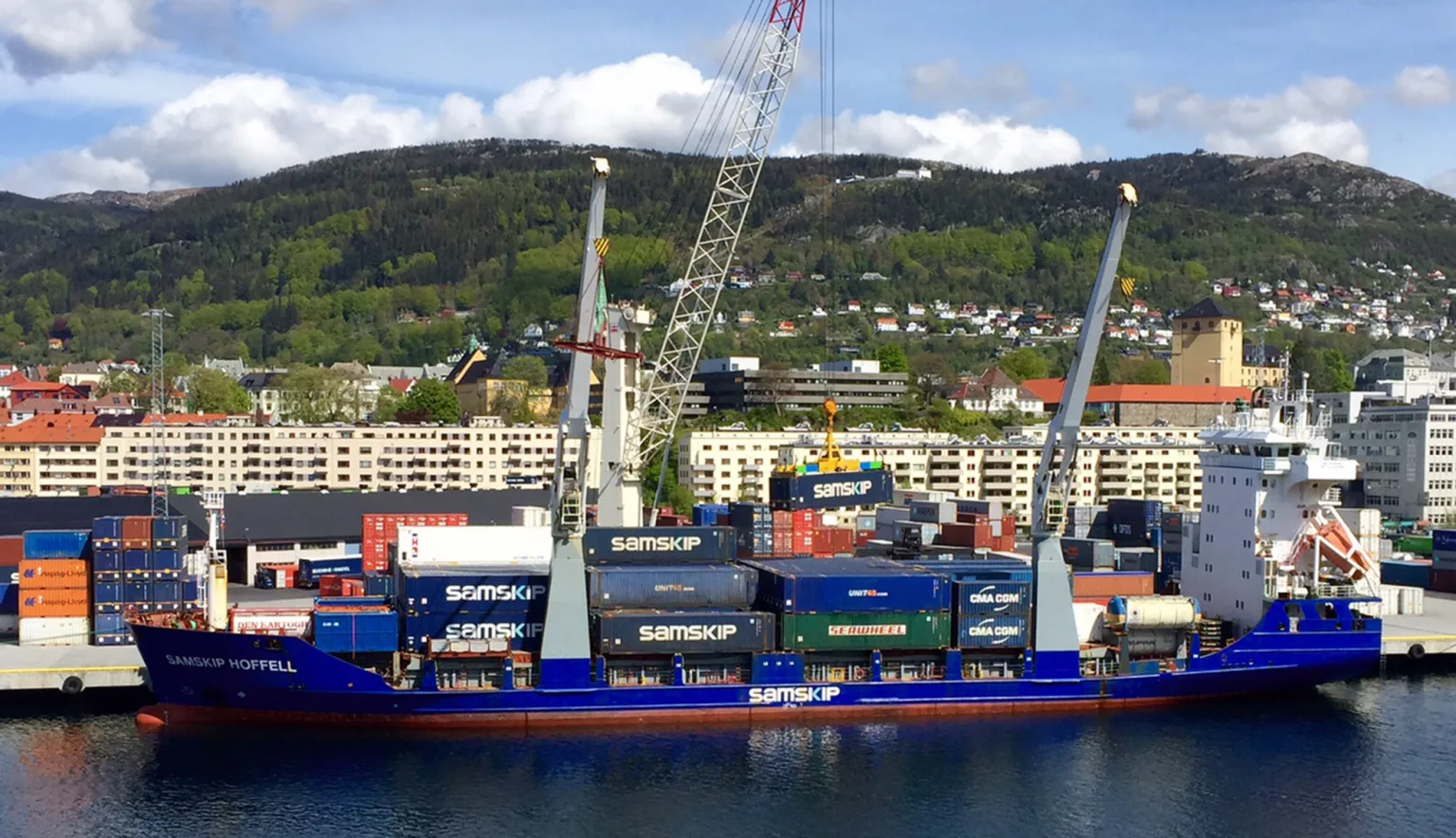Sea, road and rail transportation combined, the integrational excellence of Samskip is serving to revamp and revitalise logistics across industries.
INTRODUCTION
Transportation. A cornerstone of European integration and economic growth, it is often considered to be the lifeblood of industry for many continental businesses.
A vital part of the supply chain, mounting transportation challenges such as congestion and adverse environmental effects are being placed under the microscope as the logistics industry continues to become increasingly difficult to navigate.
One company championing innovation in the face of these rising pressures, however, is Samskip Norway – a business that has been able to excel with a differentiated approach, and one with more than two decades of experience in the field.
“Samskip began operating in Norway in the mid-90s, starting out by operating a shipping service between Norway and Iceland,” explains Are Grathen, the company’s Managing Director. “Since then, we’ve become a core part of the Samskip Group’s pan-European multimodal logistics network, committed to delivering operational excellence.”
Combining rail, road and waterway transportation services into one overriding network, these multimodal operations stand the business apart from the competition, allowing it to proficiently provide sustainable and cost-effective supply chain solutions while cutting out unnecessary road mileage.
“The fact that we are involved in all of these segments bar air freight, blending and fusing a multitude of different networks and logistics hubs under the same roof is our core competency,” explains Grathen. “It’s undoubtedly a competitive advantage, with attractive pricing, optimal transit times and environmentally friendly operations being staples of Samskip in Norway and across Europe as such.
“It’s the backbone of the multimodal concept.”
A BUSINESS BOLSTERED
Joining the company back in March of 2015, Grathen has witnessed a crucial period of expansion for Samskip in Norway over the course of the past four years.
In 2016 Samskip purchased Euro Line Container, a shipping company based out of Bergen on the west coast, a year later also acquiring Nor Lines, a fellow industry stalwart situated in Stavanger to the south of Bergen with presence across the entire country.
“These acquisitions complemented our pan-European network effectively, providing us with full coverage of the Norwegian coastline,” Grathen explains. “We’ve begun to experience the merits of these synergies more and more as we’ve continued to integrate these expanded capabilities with our already substantial cargo capacity on the coastal routes.
“The Hurtigruten Coastal Express, for example, is one of Norway’s famous scenic coastal routes that’s utilised by cruise ships. However, equally the Hurtigruten ships house additional cargo capacity and call at 34 ports along the Norwegian coast on a daily basis, something that’s quite unique in seaborne transportation.”
However, already in a short space of time this bolstered waterborne presence, coupled with Samskip Norway’s extensive on-land capabilities, the business’s offering is now somewhat unrivalled within the national market.
“Our multimodal approach can be quite complex, for sure, but we have 200 employees all operating on the same platform and some long-established partnerships that enable this extensive coastal coverage,” adds Grathen.
ASPIRATIONAL AMBITION
Natural yet substantial expansions to the company’s existing regional presence, Samskip and the Norway MD remain concentrated on maximising integrational synergies.
Asked about the firm’s current investment plans, the MD replied: “Currently we’re digesting our recent acquisitions, it’s been a hectic but truly transformational couple of years.
“Nor Lines was an active player in the seafood logistics market, for example. It’s presence in this market in the north fitted well with our own strategic goals of bolstering our cold chain outlook and we’ve still got more to offer in this space.”
A core focus of the company, Samskip in Norway is a key proponent of the Group’s ambitions in this cold chain niche, keeping ahead of market trends and in touch with legislative requirements in order to maintain reliable yet flexible transportation options for its clientele.
Moreover, looking ahead, another of the company’s outspoken ambitions is to simultaneously grow further into the container transport segment in Norway within the next two to three years, incorporating all regions.
“The ambition is to take the multimodal container traffic that is currently somewhat limited to the southern part of Norway to the upper reaches of the country, allowing the entirety of northern Norway to become part of our pan-European logistics ecosystem,” explains Grathen.
“We make an effort to offer services to scarcely populated places. The whole idea of the network is that we can reach deep into every market, irrespective of its size.
“When you’re dealing in the UK you’re dealing with cities with millions of people, but when you’re in northern Norway you’re often dealing with remote villages of maybe a few hundred people, however still rich in industries like seafood or manufacturing.”
FACILITATING THE FUTURE
Beyond this, Grathen also reveals that the company is readily preparing itself for the incorporation of next generation technologies in order to ensure that Samskip remains an innovative logistics player.
“For 2019, our key priorities are to complete the integration of our recent acquisitions and continue to containerise our transports, moving more cargo from transport by truck to more environmentally responsible rail and sea freight solutions,” he reiterates.
“However, we’re also looking beyond the short term.”
To this end, the company is currently working on a conceptual study for the planned use of emission-free, autonomous ships, analysing the possibilities of hydrogen fuels, remote-driving technologies and autonomous cargo handling capabilities.
“This project, named SeaShuttle, has been granted substantial financial support by the Norwegian government with the end goal of providing emission-free maritime transport,” Grathen adds.
Currently developing two hybrid hydrogen propelled ships that will be used to connect the Baltic states and Sweden, with the Norwegian coast. Seashuttle is just one of six similar initiatives that are included in PILOT-E – a €100 million-plus scheme involving the Research Council, Innovation Norway and Enova that are targeting emission sea freight in specific areas along the Norwegian coast by 2030.
Excited about these game-changing prospects, Grathen concludes: “Sustainable, autonomous and emission-free operations will undoubtedly become a major trend of our industry for decades to come. It’s definitely on its way.”




















